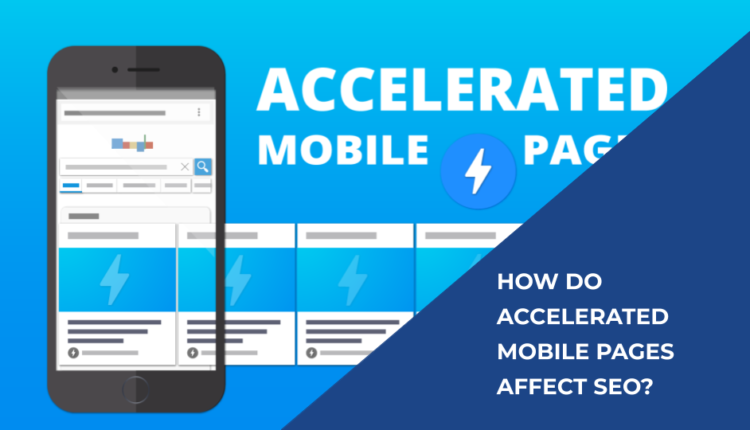With smartphone usage taking over internet traffic, there has been a higher demand for mobile-optimized websites which lead to the development of first mobile compatible sites, then mobile-friendly sites, and now we have Accelerated Mobile Pages (AMP).
So, in this article, we are going to explore what is accelerated mobile pages, how they work, and their impact on SEO.
What is Accelerated Mobile Pages (AMP)?
AMP is an open-source HTML framework developed in 2015 by Google. This enables a way to build web pages easily and with a bigger emphasis on mobile user-experience since the loading time of a webpage is reduced when shown on a mobile device. AMP tends to load up to 3x times faster than non-AMP, and over 1 million websites are using AMP.

The goal of Accelerated Mobile Pages is to reduce page loading time and increase the overall performance of websites on mobile websites. So, since this has a huge impact on user experience and the pages will load faster, users will be more satisfied and will be less likely to leave the page quickly, therefore decreasing the bounce rate.
The mobile shift and AMP
At the Mobile World Congress in 2010, Google’s then-CEO, Eric Schmidt, announced that the company was adopting a mobile-first mindset. After this statement, there were various Google updates launched over the years, in order to support the claim and establish mobile-friendliness and mobile compatibility.
One of these updates was actually the AMP, an initiative designed to help publishers build lightweight versions of their web pages to perform better on mobile devices. Since its launch in 2015, the skepticism from webmasters has gone down and the number of people using AMP has grown, especially when Google launched the mobile-first indexing in 2019.
With mobile-first indexing, Google intended to solve the issue that mobile searchers had. Since the desktop version of websites was vastly different from the mobile ones, it was more difficult for mobile users to navigate websites, therefore Google wanted to change this by switching things up. With their new mobile indexing focus, webmasters were almost forced to further optimize their websites to suit mobile users better. With this, even more, websites started to use AMP to try and improve their mobile website versions and not fall behind on rankings.
How do Accelerated Mobile Pages work?
Now that you understand how accelerated mobile pages started, let’s understand some more technical aspects of how they achieve their results.
To achieve better loading speed AMP takes many actions which will result in an overall better user experience. Let’s explore the main actions taken to understand how they work.
Prioritizing resource loading
Before displaying a page to the user, the downloads are prioritized according to their importance for the user. This way the most relevant content will be shown first and the user does not have to wait longer to view what he actually wants.
Pre-set layouts
Because AMP requires some custom set properties beforehand, it means it can predict the page layout in advance. Meaning the page will not need any extra time to adapt to the correct layout after all assets load.
Pre-rendering
For AMP to not waste time rendering after the user clicks on a page, rendering is already taking place while the user is still on Google’s search result page (SERP). Because of this a significant amount of loading time is saved, improving the overall time.
These processes are key when it comes to what makes an Accelerated Mobile Page, and to make it all work it is important that some elements in the framework, like for example image tag, are replaced by custom elements. You can figure out more about these HTML specifics here.
How do Accelerated Mobile Pages affect SEO?
As we have seen at the beginning of this article, AMP allows for a decrease in loading time, meaning pages will load faster. If they load faster this means that users will get the information they want more efficiently and without much waiting time.
This is essentially the perfect combination when it comes to user experience, getting what you want in a fast and convenient way. What else could a user possibly want?
When you keep your user happy by showing them what they want to see quickly, they are less likely to leave your page, therefore decreasing your website’s bounce rate. Getting the user to access your site and actually stay there are the first few steps on the conversion funnel every business owner desires
This is because if the user goes on your website and has a good experience he will stay there and likely engage with your content. This is extremely important because when they don’t leave your website straight away the chances of them converting and actually becoming a client are higher.
So, if AMP pages are good for the users, good for the business owners/webmasters, how are they good for SEO? Well, simply put, Google’s algorithm considers users experience a highly valuable factor for ranking websites on the Search engine results page.
That means if you have a good user experience and related indicative, such as a low bounce rate, you will score points with the Google algorithm, therefore increasing your chances of a better SEO result.
Summary
We live in a fast-paced world where we have information at our fingertips, literally through our smartphones. This creates a shift in how people navigate the internet and get information, so much so that it is expected for Google’s main traffic source to be mobile in a few years.
With this in mind, things need to be adapted and this where the AMP and mobile-first indexing came from. They are meant to improve the user experience when navigating through websites on your mobile devices. So, naturally, SEO metrics will also shift more towards the mobile experience in order to keep up with the trend, and so should you.

Comments are closed.